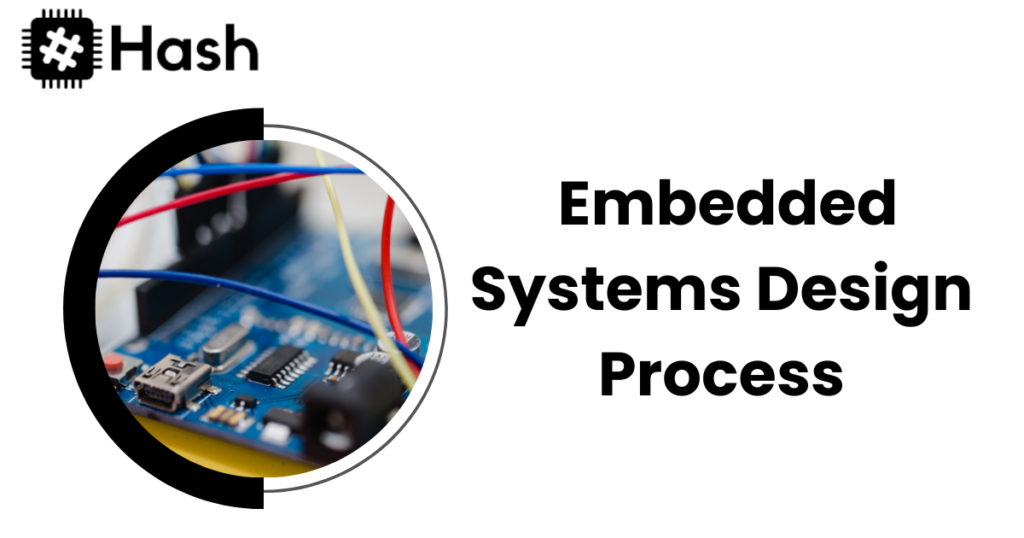Exploring Best Practices for Embedded Software Development Process and Tools
Embedded software is becoming increasingly important in today’s world as more and more devices become connected to the internet. Embedded software is used in everything from smart home devices to cars and airplanes.
As a result, the development of embedded software has become more complex, and there is a need for best practices to ensure that the software is reliable, secure, and meets the needs of the end-users.

Importance of Embedded Software Development
Embedded software development is the process of creating software that is integrated into a hardware device, such as a mobile phone, a medical device, or a car.
Embedded software is becoming increasingly important in today’s world. According to a report by Markets and Markets, the embedded software market is expected to grow from USD 11.9 billion in 2020 to USD 24.3 billion by 2025, at a CAGR of 15.6% during the forecast period.
This growth is driven by the increasing demand for embedded software in various applications, such as automotive, healthcare, aerospace, and defence.
The importance of embedded software development cannot be overstated, as it plays a crucial role in the functioning of many devices that we use in our daily lives. Here are some reasons why embedded software development is important:
- Enables the functionality of hardware devices: Without embedded software, hardware devices would not be able to perform their intended functions. For example, a car’s engine control unit (ECU) relies on embedded software to manage the engine’s performance and fuel efficiency.
- Improves user experience: Embedded software can enhance the user experience by providing features such as touch screens, voice recognition, and wireless connectivity. These features make devices more intuitive and easier to use.
- Increases efficiency and productivity: Embedded software can automate tasks and processes, reducing the need for manual intervention. This can result in increased efficiency and productivity, as well as reduced costs.
- Enhances safety and security: Embedded software can be used to monitor and control safety-critical systems, such as medical devices and aircraft. It can also be used to implement security features, such as encryption and authentication, to protect against cyber threats.
- Facilitates innovation: Embedded software development enables manufacturers to create new and innovative products that meet the changing needs and demands of consumers. This can lead to new markets and revenue streams.
Embedded software development process
Embedded software development life cycle
The Embedded Software Development Process and Tools are integral to the Embedded Software Development Life Cycle (ESDLC), which outlines the steps involved in designing, developing, testing, and maintaining software for embedded systems.
An embedded software development process can be applied to projects of any size or complexity, from simple devices that require only a few lines of code to complex systems that need thousands.
Requirements Gathering and Analysis
The first step in developing embedded software is to gather and analyze the requirements. This involves understanding the needs of the end-users and the system requirements. The requirements should be clear, concise, and measurable. Additionally, the requirements should be prioritized based on their importance to the end-users and the system.
Design and Architecture
Once the requirements have been gathered and analyzed, the next step is to design the software architecture. The architecture should be modular, scalable, and flexible. This will allow for easier maintenance and updates in the future.
Additionally, the architecture should be designed with security in mind, as embedded software is often used in applications where security is critical.
Coding and Implementation
After the architecture has been designed, the next step is to write the code and implement the software. The code should be written with best practices in mind, such as using comments to explain the code and using descriptive variable names.
Testing and Verification
Once the software has been implemented, the next step is to test and verify the software. Testing should be done at every stage of the development process, from unit testing to system testing.
Testing should be done using a variety of test cases to ensure that the software works in all possible scenarios. Finally, the software should be verified to ensure that it meets the requirements and works as expected.
Maintenance and Support
After the software has been deployed, the final step is to provide maintenance and support. This involves monitoring the software for issues and providing updates and bug fixes as needed.
If you want to learn more about the Embedded software development life cycle Get Enrolled for a Free Demo ⬇️
Tools for Embedded Software Development
To facilitate the development of embedded software, there are several tools that can be used. embedded software development process and tools, embedded software development process and tool in These tools include integrated development environments (IDEs), version control systems (VCSs), debuggers and analyzers, build and deployment tools, and code review and analysis tools.
Embedded software tools
Integrated Development Environments (IDEs)
IDEs are software applications that provide a comprehensive environment for writing, testing, and debugging software. IDEs can help improve productivity by providing features such as code highlighting, code completion, and debugging tools.
Popular IDEs for embedded software development include Eclipse, Visual Studio, and Code Composer Studio.
Version Control Systems (VCSs)
VCSs are software tools that help manage changes to source code over time. VCSs can help improve collaboration by allowing multiple developers to work on the same codebase simultaneously.
Additionally, VCSs can help improve code quality by providing a history of changes and allowing for easy rollback in case of issues.
Popular VCSs for embedded software development include Git, Subversion, and Mercurial.
Debuggers and Analyzers
Debuggers and analyzers are software programs that help programmers find and fix errors in their code. Debuggers allow developers to step through their code and examine variables and memory to identify issues.
Analyzers can help identify potential issues in the code before they become problems.
Popular debuggers and analyzers for embedded software development include GDB, JTAG, and Valgrind.
Build and Deployment Tools
Build and deployment tools are software tools that help automate the process of building and deploying software. These tools can help improve productivity by reducing the time needed to build and deploy software.
Build and deployment tools can help ensure that the software is built correctly and deployed to the correct location.
Popular build and deployment tools for embedded software development include Make, CMake, and Jenkins.
Code Review and Analysis Tools
Code review and analysis tools are software tools that help improve code quality by identifying potential issues in the code. These tools can help identify issues such as security vulnerabilities, coding style violations, and performance issues.
Code review and analysis tools can help improve collaboration by allowing multiple developers to review code and provide feedback.
Popular code review and analysis tools for embedded software development include SonarQube, Coverity, and CodeSonar.
Best Practices for Embedded Software Development
To ensure that embedded software is reliable, secure, and meets the needs of the end-users, there are several best practices that should be followed throughout the development process.
These best practices include:
Adopting a structured and iterative approach: Breaking down the development process into manageable phases, ensuring regular feedback loops, and embracing an iterative approach for continuous improvement.
Establishing clear requirements and specifications: Ensuring a thorough understanding of project requirements and defining precise specifications to guide the development process.
Utilizing version control and documentation practices: Employing version control systems and robust documentation practices to manage source code, track changes, and facilitate collaboration among team members.
Emphasizing modularity and code reusability: Designing software components that are modular, reusable, and scalable, promoting efficiency and ease of maintenance.
Incorporating testing and quality assurance throughout the process: Integrating testing and quality assurance activities at every stage of development, including unit testing, integration testing, and system testing, to identify and rectify issues early.
Managing project scope and change control: Implementing effective change control mechanisms to manage scope creep, minimize project disruptions, and ensure timely delivery

If you want learn more Challenges in Embedded Software Development Process and Tools get Enrolled now ⬇️
Challenges in Embedded Software Development Process and Tools
Complexity: Developing embedded software involves managing complex systems with tight resource constraints, requiring expertise in areas such as real-time operating systems, hardware interactions, and power optimization.
Performance optimization: Embedded software developers face the challenge of achieving optimal performance while working with limited processing power, memory, and energy resources. They must carefully optimize code and algorithms to meet the system’s requirements.
Hardware-software integration: Embedded software must seamlessly integrate with the underlying hardware, necessitating a deep understanding of hardware architectures, device drivers, and low-level programming.
Testing and validation: The testing and validation of embedded software pose challenges due to the variety of hardware configurations, real-time constraints, and limited access to the target system during development.
Long product life cycles: Embedded systems are often designed for long product life cycles, which means the software needs to be reliable and adaptable to future changes and updates. Managing software updates and maintaining compatibility with evolving technologies can be challenging throughout the product’s lifecycle.
Conclusion
In conclusion, it is crucial that we explore and implement best practices for embedded software development processes and tools in order to ensure the successful development of reliable and efficient embedded systems.
Addressing the challenges of complexity, performance optimization, hardware-software integration, testing, and long product life cycles requires a disciplined and systematic approach.
By leveraging industry-standard methodologies, specialized tools, and a deep understanding of the hardware and software interactions, developers can improve the quality, performance, and maintainability of embedded software throughout its lifecycle.
Investing in continuous learning, staying updated with emerging technologies, and fostering collaboration between hardware and software teams are key factors in achieving excellence in embedded software development.
Frequently asked questions about Embedded Software Development Process and Tools
Embedded software development is the process of creating software that is specifically designed to run on embedded systems, such as microcontrollers and other devices.
Follow structured coding standards, use version control, thoroughly test on real hardware, document your code, and prioritize efficient memory management to ensure reliable and maintainable embedded software
A version control system is a tool that tracks changes to code over time. It allows developers to collaborate on code and keep track of different versions of the code.
Clear documentation is important in embedded software development because it helps other developers understand the code and how it works. It also helps with maintenance and troubleshooting.
Automated testing is the process of using software tools to test code automatically. This can help catch bugs and errors early in the development process.
Coding standards are guidelines for writing code that make it more readable, maintainable, and consistent. They can include things like naming conventions and formatting rules.
Commonly used programming languages in embedded software development include C, C++, and assembly language. However, the choice of programming language depends on factors such as system requirements, hardware constraints, and development environment.
Commonly used tools for embedded software development include integrated development environments (IDEs) like Eclipse and Visual Studio, compilers, debuggers, version control systems, modeling tools, and simulation/emulation tools specific to the target hardware.
Common testing methodologies in embedded software development include unit testing, integration testing, system testing, and validation testing. Techniques such as white-box testing, black-box testing, and hardware-in-the-loop (HIL) testing are often employed
Handling software updates and maintenance in embedded systems with long lifecycles involves implementing a robust update mechanism, ensuring backward compatibility, providing secure firmware updates, managing version control, and having a well-defined maintenance plan to address bug fixes, enhancements, and security patches.







 embeddedhash.in@gmail.com
embeddedhash.in@gmail.com